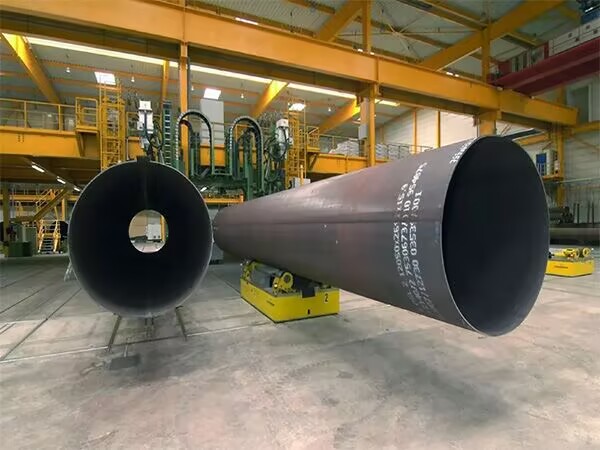ERW VS LSAW: Welding process and application analysis of straight seam steel pipe
Straight Welded steel pipes can be divided into two main types according to the welding method: ERW (Electric Resistance Welded Pipe) and LSAW (Longitudinal Submerged Arc Welded Pipe). The two have significant differences in production process, raw material selection, welding method, weld quality and appearance, and are suitable for different engineering needs. Their respective characteristics and differences will be explained in detail below.

What is ERW steel pipe?
ERW steel Pipe (Electric Resistance Welded Pipe) is a kind of steel pipe formed by heating the edge of the steel strip through high frequency current to melt, and then welding through extrusion pressure. Therefore, it does not need to be filled with solder for welding, has the characteristics of low production cost and high production efficiency, and is suitable for large-scale manufacturing. Due to its lightweight and high efficiency, ERW steel pipes are commonly used in medium and low pressure fluid pipelines, gas pipelines, water conservancy facilities and general structural support.
What is LSAW steel pipe?
The
Longitudinal Submerged Arc Welded Pipe (LSAW) is made by submerged arc welding process. The welding process uses flux to protect the molten pool, and welding wire is added as a filling material. The production process includes JCOE or UOE forming technology. It has the characteristics of high weld quality, can withstand high pressure, high strength conditions, suitable for the production of large diameter, thick wall steel pipe. It is widely used in high-demand places such as oil and gas transmission, high-pressure water pipelines, bridge pillars and large-scale infrastructure construction.
Raw materials and productivity
ERW steel pipe: hot rolled steel strip as the raw material, the width according to the demand of steel pipe customized, suitable for mass production. Mainly used for the manufacture of small caliber, thin-wall steel pipe, not suitable for the production of thick wall pipe and very large caliber pipe, the strength of the weld is slightly weaker than submerged arc welding.
LSAW steel pipe: hot-rolled steel plate as the raw material, the molding process is more complex, suitable for customized production. Large diameter, thick wall steel pipe can be manufactured, but the production efficiency is low. LSAW steel pipes usually have higher strength and reliability, and can meet the needs of complex working conditions.
Differences in welding methods and welds
ERW steel pipe:
Welding method: The edge of the steel strip is locally heated to melt through high frequency current, and then welded through extrusion pressure, the welding process does not need to fill materials.
Weld characteristics: The weld is narrow and smooth, almost no obvious weld marks. Small heat-affected area, good welding strength and ductility. Suitable for medium and low pressure pipeline, but in thick wall and large diameter pipeline weld strength is not as good as submerged arc welding.
LSAW steel pipe:
Welding method: The submerged arc welding process is used, the welding pool is protected by flux, and the welding seam is filled with welding wire. The welding process is stable and reliable.
Weld characteristics: wide and obvious weld, high welding strength. The weld has high toughness and tensile strength, and can withstand greater pressure and complex environments. More suitable for applications with high pressure and high strength requirements, such as oil and gas pipelines and heavy industrial facilities.
The difference in appearance
ERW steel pipe: The weld of ERW steel pipe is located in the middle of the steel pipe, almost no trace of the weld, and the surface of ERW steel pipe is relatively smooth.
LSAW steel pipe: the weld is more obvious, continuous distribution along the length direction of the steel pipe, and the width of the weld is larger. The tube body is usually thicker, and the appearance is more stable and solid.
Read more:
What is ERW steel pipe?
